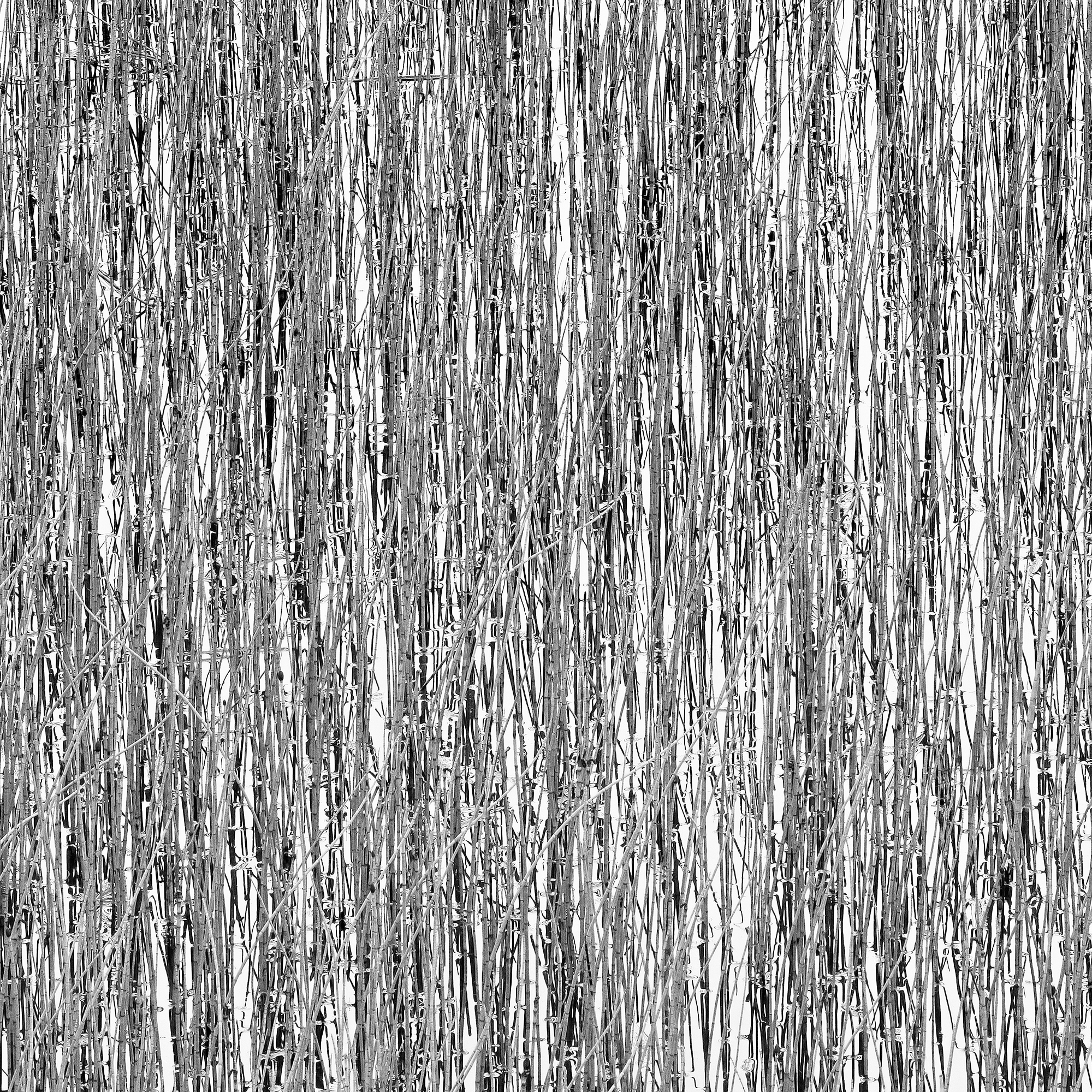Equisetum
2020
2020

Equisetum, 2020, archival pigment print on Hahnemühle Photo Rag Baryta paper, diptych, 127 × 210 cm / 50 × 82,5 inches
The origin of the word Equisetum comes from two Latin words: equus (horse) and saeta (bristle or hair) and is commonly referred to as horsetail. The plant is also known by several other names such as snake grass, scouring rush, and pewterwort. The forerunners of Equisetum developed in the early Devonian period 400 million years ago. In the following millions of years they dominated the undergrowth, yet some subspecies grew as high as 30 meters, accounting for forests of huge areas and eventually became the source of the coal deposits of today.
Equisetum is a “living fossil” reminding us of an era when plants did not yet have the ability to flower, relying exclusively on minerals, water and light. Living fossils occupy a special, mystical place in the science of evolution theory because, on the one hand, they survived all the extinction events and, on the other, in their case for some reason further development presumed by evolutionary theories did not lead to new forms. Thus Equisetum itself causes confusion in the scientific concept of evolution, because its existence suggests that evolution can not always be linear, and that species can remain unchanged for millions of years.
The origin of the word Equisetum comes from two Latin words: equus (horse) and saeta (bristle or hair) and is commonly referred to as horsetail. The plant is also known by several other names such as snake grass, scouring rush, and pewterwort. The forerunners of Equisetum developed in the early Devonian period 400 million years ago. In the following millions of years they dominated the undergrowth, yet some subspecies grew as high as 30 meters, accounting for forests of huge areas and eventually became the source of the coal deposits of today.
Equisetum is a “living fossil” reminding us of an era when plants did not yet have the ability to flower, relying exclusively on minerals, water and light. Living fossils occupy a special, mystical place in the science of evolution theory because, on the one hand, they survived all the extinction events and, on the other, in their case for some reason further development presumed by evolutionary theories did not lead to new forms. Thus Equisetum itself causes confusion in the scientific concept of evolution, because its existence suggests that evolution can not always be linear, and that species can remain unchanged for millions of years.

Equisetum, 2019, archival pigment print on Hahnemühle Photo Rag Baryta paper, diptych, 127 x 210 cm, detail

Equisetum, 2019, archival pigment print on Hahnemühle Photo Rag Baryta paper, diptych, 127 x 210 cm, detail

Equisetum, 2019, archival pigment print on Hahnemühle Photo Rag Baryta paper, diptych, 127 x 210 cm
